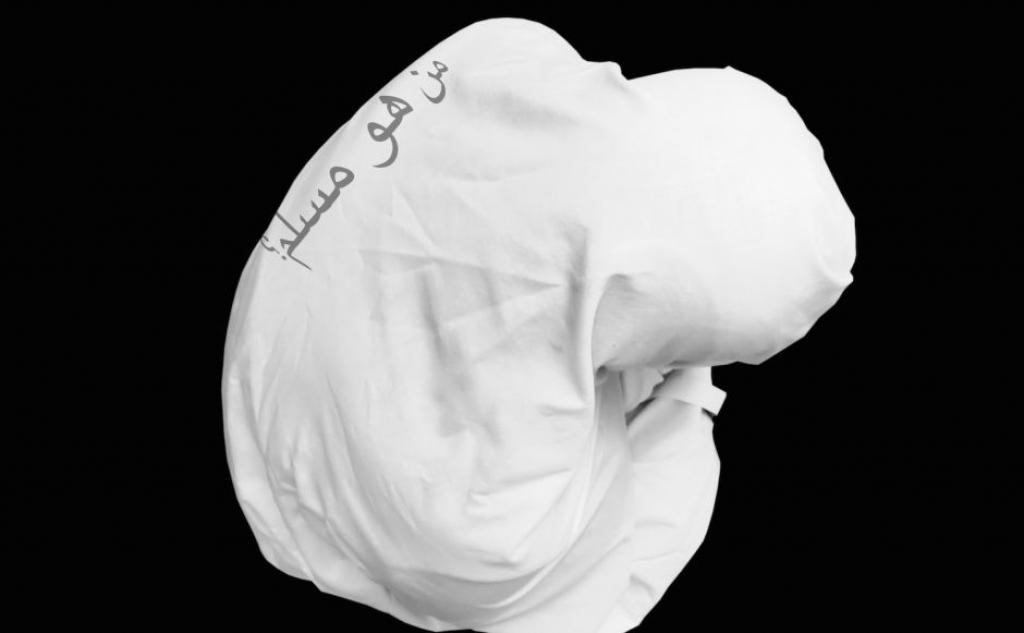Amza Adam, a Master student in International History, reflects on the term 'Muselmann'. In this interview premised on the conceptual artwork of Narendra Pachkhédé, a Canadian multidisciplinary intellectual, Amza Adam delves into the connotations and historicity behind this terminology.
Humanities and social sciences have never ceased to wonder on the different manners to grasp the complexity of human relations and their representations. To do so, they have elaborated a range of methods in order to present the results of their research in an ‘orderly and intelligible’ way. These results are traditionally transmitted in a discursive way through the use of texts – or words – which are supposed to be more accurate in depicting the complexity of reality and, thus, to produce knowledge. But, is this way of proceeding really the most adequate? Aren’t there any other ways to question the world and communicate our ideas? Can’t we think beyond our disciplinary methods?
Narendra Pachkhédé, in his forthcoming art exhibition this year at the Axenéo7 in Gatineau (Québec), challenges precisely these representations, by examining what composes and constitutes the Muslim identity. He approaches the subject by using various media such as pictures, sounds and, most and foremost, ‘forms’. The last notion is central to understand the conceptualisation of what the artist calls ‘form as history’. Indeed, according to him, we often tend to overlook the fact that our representations, prior to being textually discursive, are composed of visual associations – or pictures – sometimes blurry, sometimes clear, of our surroundings. In other words, our representations are sensitive and figurative associations before being rational language constructions. As a result, reconstructing abstract forms by the mere use of words is insufficient to grasp the full extent of their expressions. The need to address these issues through a multidisciplinary approach then becomes a worthwhile proposition that we should explore.
Thus, Pachkhédé steps out of our disciplinary boundaries and questions, by the use of visual art and photography, what constitutes the core of the Muselmann condition: its form. This German expression was used to designate a specific type of prisoner in the concentration camps of the Second World War. Primo Levi, in If This Is a Man, has notably depicted them as beings at the bottom of the human condition, in total undernourishment, resigned, who have lost all kind of willpower, whose lives have been extracted, with no goal, no past, nor present. They are nothing but empty bodies, prostrate and despicable forms whose presence is unwanted.
The Muselmann condition has been ignored by philosophers except for Giorgio Agamben. The Muselmann however has not disappeared. We can meet him in the heart-breaking testimonies of prisoners from Guantanamo Bay or Abu Ghraib. Today, says Pachkhédé, it is urgent to reflect thoroughly upon this condition of the Muselmann. We cannot continue to ignore that its etymology links it, in its essence, to the representations we have of the Muslim. Why was this term chosen to designate this type of prisoner? How has it been possible for someone, while looking at a prisoner, a person on the threshold between life and death, to utter ‘this makes me think of a Muslim’? Why does the West keep producing Musulmänner and through which mechanisms did its form extend to the current Muslim condition?
These are the questions that Amza Adam has been pondering on since he first read If This Is a Man. Surprised that this terminology was not discussed sooner, it is only ten years later, after discovering Pachkhédé’s work that he has finally understood these questions are central in the understanding of the human condition of the twenty-first century.
******Image: Artwork by Narendra Pachkhédé


